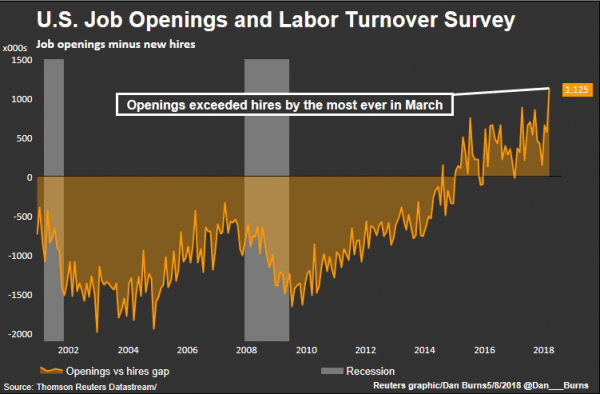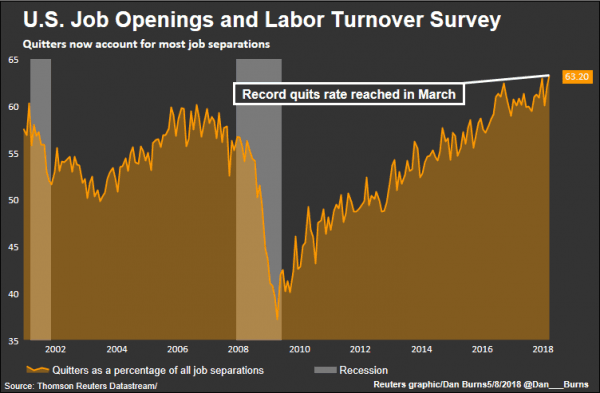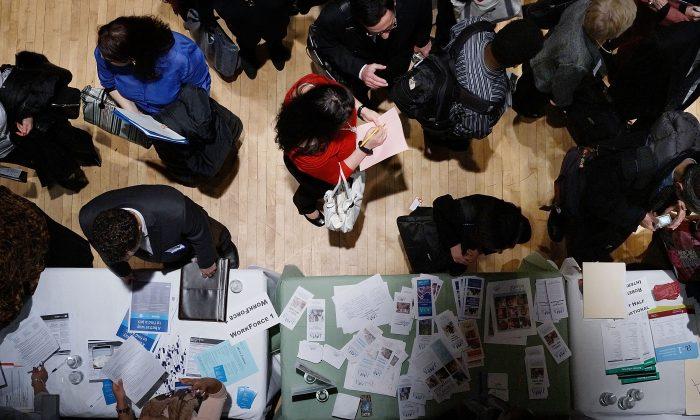WASHINGTON—U.S. job openings surged to a record high in March, suggesting that a recent slowdown in hiring was probably the result of employers having difficulties finding experienced workers.
The monthly Job Openings and Labor Turnover Survey, or JOLTS, released by the Labor Department on Tuesday also showed more workers voluntarily quit their jobs in March, a sign of confidence in the labor market that economists believe will help to push up wage growth this year.
The JOLTS report bolsters expectations that inflation will accelerate and keep the Federal Reserve on track to raise interest rates at least two more times this year. The U.S. central bank hiked interest rates in March.
Job openings, a measure of labor demand, increased by 472,000 to a seasonally adjusted 6.6 million. March’s job openings were the highest since the data series started in December 2000.

The job openings rate rose three-tenths of a percentage point to 4.2 percent, also an all-time high. But hiring fell from 5.5 million to 5.4 million in February, suggesting a skills mismatch. Job growth slowed in March and April after increasing by the most in more than 1.5 years in February.
The skills mismatch was also corroborated by an NFIB survey on Tuesday showing lack of experienced workers as “the single most important problem” for a fifth of small businesses in April.
Faster Wage Growth Seen
There were 112,000 additional vacancies in the professional and business services industries. The construction industry had 68,000 more job openings and companies in the transportation, warehousing, and utilities sector had 37,000 unfilled positions.In March, job openings were concentrated in the Midwest and Northeast regions. There was one unemployed worker per job opening in March. The unemployment rate fell to a near 17.5-year low of 3.9 percent in April.
About 3.3 million Americans voluntarily quit their jobs in March, up from 3.2 million in February.
As a result, the quits rate, which policymakers and economists view as a measure of job market confidence, rose one-tenth of a percentage point to 2.3 percent. Quits accounted for a record 62 percent of separations in March. At the depths of the recession, they made up just a third.

“Quits are also a source of upward pressure on wages,” said Sarah House, a senior economist at Wells Fargo Securities in Charlotte, North Carolina. “The majority of workers who voluntarily change jobs receive a pay bump, generating stronger wage growth for job switchers.”
Wage growth as measured by average hourly earnings has remained moderate, increasing 2.6 percent year-on-year in April. But other gauges of wage growth have been more robust.
The Employment Cost Index, widely seen by policymakers and economists as one of the better measures of labor market slack, showed wages rising at their fastest pace in 11 years in the first quarter.
Layoffs fell by 56,000 to 1.56 million in March.






Friends Read Free